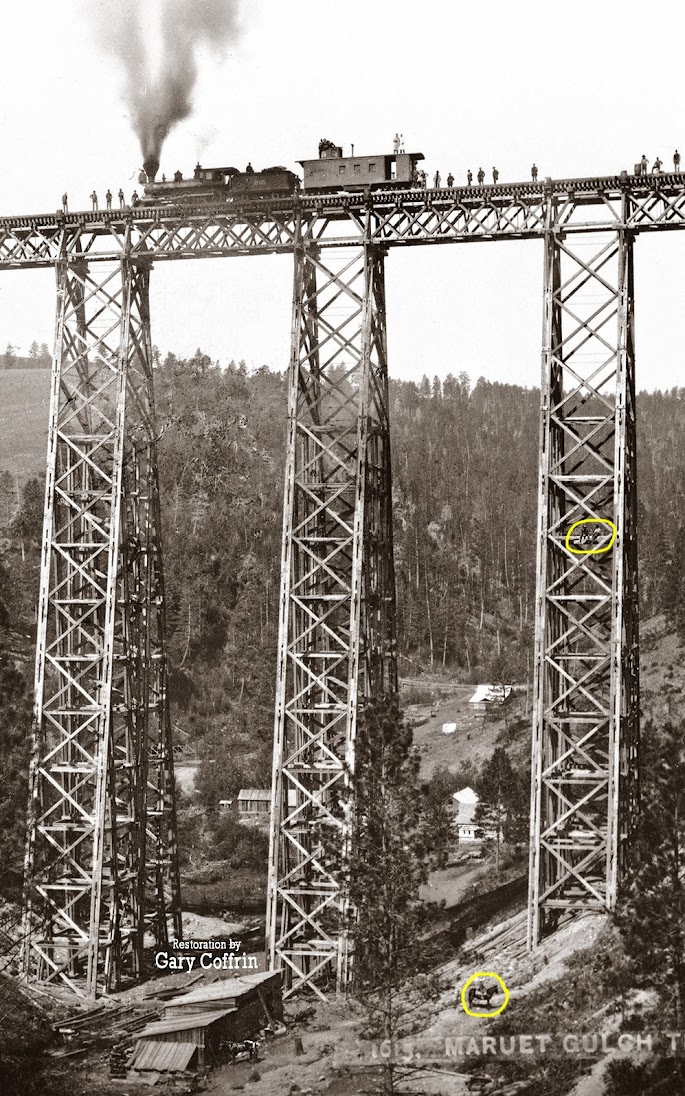In 1853, the United States War Department dispatched five separate survey parties to map out the most economical and practical railroad routes.
In 1854, Washington Territorial Governor Isaac Stevens set out to impose treaties on the Indian nations of what is now Washington, Idaho, and Montana which would move Indians out of the way of the railroads and the non-Indian settlers that the railroads would bring in.
In 1864, President Abraham Lincoln signed legislation which granted “funds to aid the construction of a railroad and telegraph line from Lake Superior to Puget Sound.”
In 1875, the Northern Pacific Railroad was organized under the leadership of Frederick Billings and by 1878 construction had begun again. It has been estimated that construction of the railroad involved the efforts of 25,000 Chinese laborers, as well as countless other immigrants.
In 1881, the Northern Pacific reached the Yellowstone River at Miles City, Montana. This allowed for the direct shipment of buffalo hides to the east and increased commercial buffalo hunting. In 1884, the Northern Pacific sent its last carload of buffalo hides to the east. The once great herds were now nearly extinct.
Native Americans were less than enthusiastic about the railroad cutting across their reservations and aiding in the decimation of the buffalo herds.
In Western Montana, the natives on the Flathead Reservation (Pend d’Oreille, Salish, and Kootenai) bluntly told the Americans that they did not want the railroad running through their land.
In response the United States granted the Northern Pacific Railway a right-of-way through the Flathead Reservation.
This was, in essence, a transfer of wealth from the poor (Indians) to the wealthy (non-Indians). Because the rich run the politicians, therefor the country.
It would take a court case in the twentieth century to obtain adequate compensation.
Completion of the Northern Pacific Railroad also had consequences for the coastal tribes. The completed rail line, coupled with improvement of canning techniques, resulted in an increased demand for Northwest Coast salmon. This marked the beginning of the depletion of the once-great salmon runs and the exclusion of the tribes from the fisheries which had been guaranteed to them by treaty.
a month before the bridge was completed, a rope was next to the trestle bridge, strung across the gorge, and Eli “Frenchy” Carpenter did his high wire tightrope act across the 870 feet long rope, 226 feet over the gulch
“Frenchy” Carpenter allegedly made a name for himself as a trapeze artist for the Barnum and Bailey Circus.
But he went down in history as one of two prospectors who discovered the Silvery Slocan, a vast deposit of silver and lead ore in eastern British Columbia in 1891, 8 years after crossing the gulch on a rope




There is still an impressive bridge here now made of steel of course. Its is on the Evaro Hill line of the Montana Rail Link just north of Missoula. Line sees daily freight service.
ReplyDelete